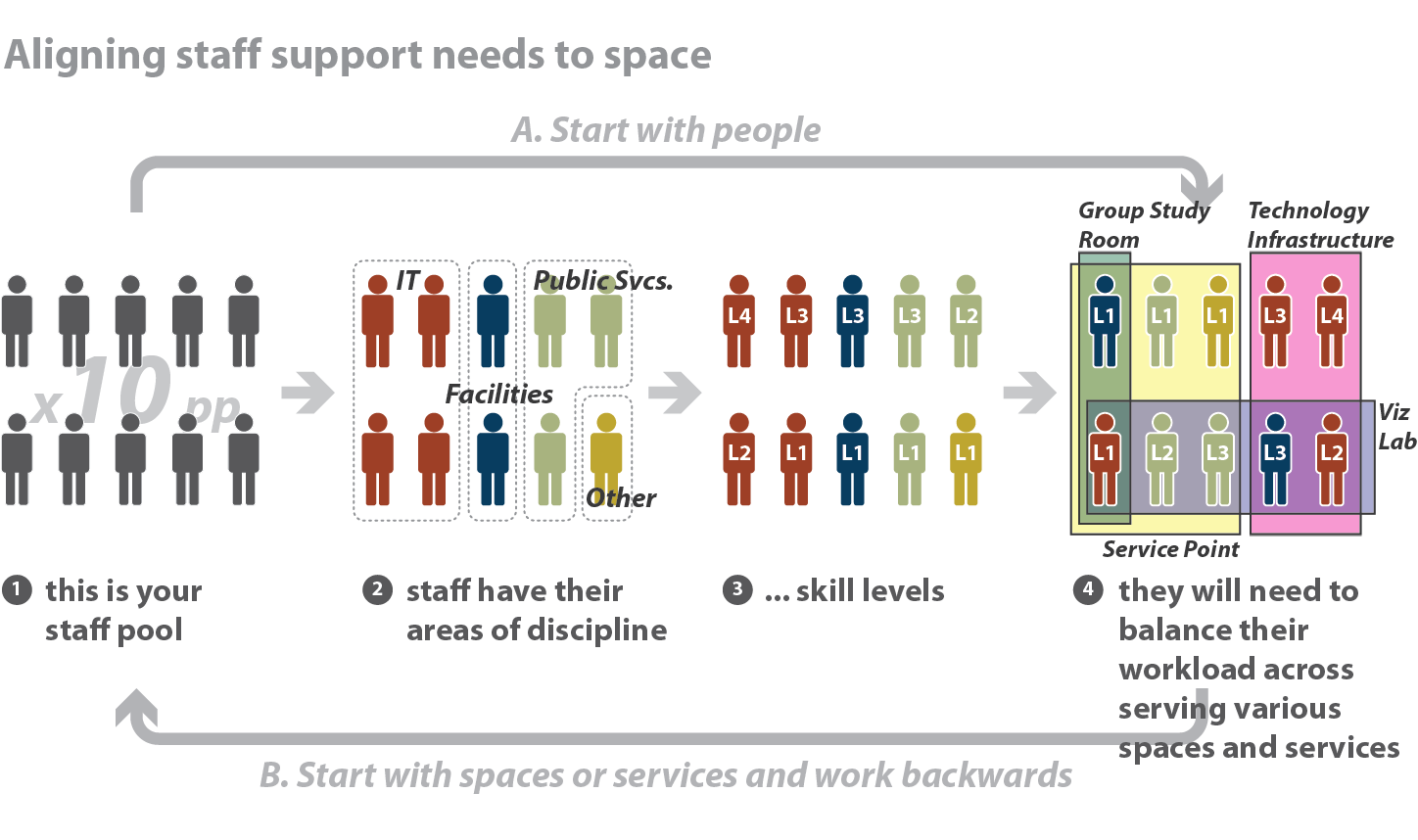Staffing Services
Estimating the staff you need is a critical part of understanding how the services and support within a space will work. This should be an iterative process of going back-and-forth between the spaces anticipated, the current staffing, and the forecasted additional staff need.


To work through this process, you need to look at four key factors:
- FTE: The total number of staff needed, as full-time equivalents (FTE). For example, 1 student intern could be considered 0.5 FTE
- Discipline: How that staffing breaks down by service area or discipline. The most basic could be public services (e.g.: service desks), tech support, facilities support, or other specialists
- Level: The degree of experience, knowledge and skills required, generally divided into four levels, with Level 1 as the most basic and Level 4 as the most advanced expert
- Space: The assignment of staff to spaces or service areas, for instance, the proportion staffing the helpdesk vs. group study rooms vs. infrastructure behind the scenes
The diagram above illustrates how you move through considering these different factors and the table below explains the function and knowledge/skills required of staff by discipline and level to arrive at this.
Staff function and skills per area of discipline
Technology Staff
| Levels | Job Function | Skills |
|---|---|---|
| L1 |
|
|
| L2 |
|
|
| L2 + |
|
|
| L3 |
|
|
| L4 |
|
|
Public Services Staff
| Levels | Job Function | Skills |
|---|---|---|
| L1 |
|
|
| L2 |
|
|
| L2+ |
|
|
| L3 |
|
|
Example
If you were planning a Learning Commons and estimated that you would have 11 FTE staffing it, you could end up with a table like this:Once you know (or can guess): (1) the number of FTE you anticipate; (2) the breakdown of those FTEs by discipline/area and level of seniority; and (3) how those staff would be distributed by space type, then go directly to the Integrated Budgeting Tool.
| Level-1 Basic |
Level-2 Intermediate |
Level-3 Advanced |
Level-4 Expert |
|
|---|---|---|---|---|
| Public Services | 3.0 | 1.0 | 0.5 | 0.5 |
| Facilities | 0.5 | |||
| IT | 2.0 | 1.0 | 1.0 | |
| Other | 1.5 | |||
| TOTAL FTE BY LEVEL |
5.0 | 3.0 | 1.5 | 1.5 |
